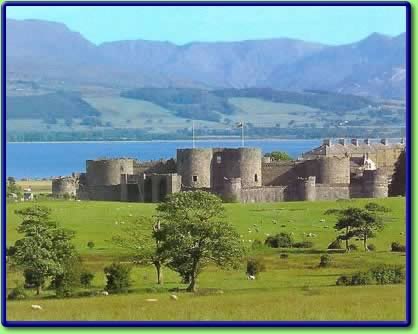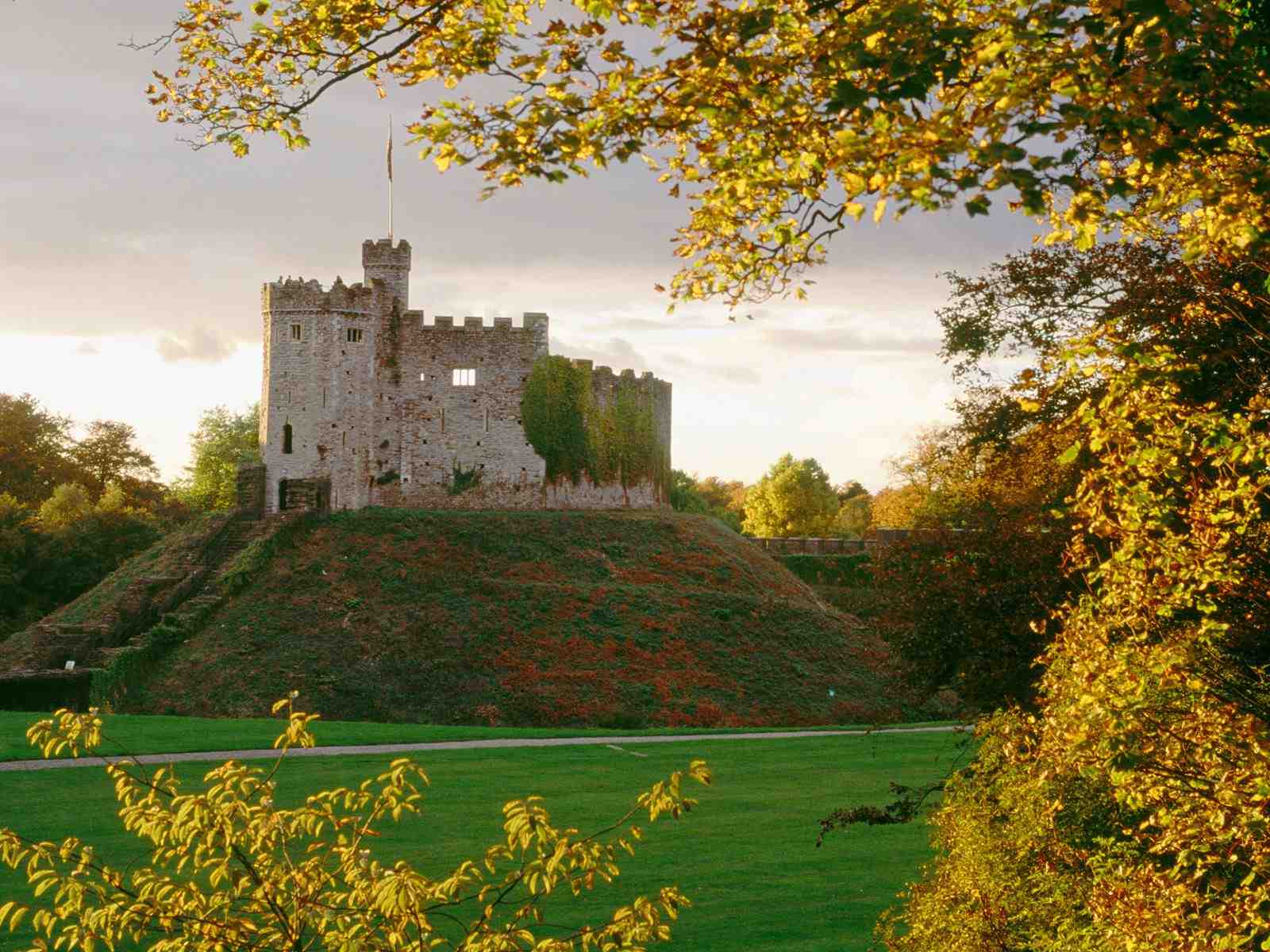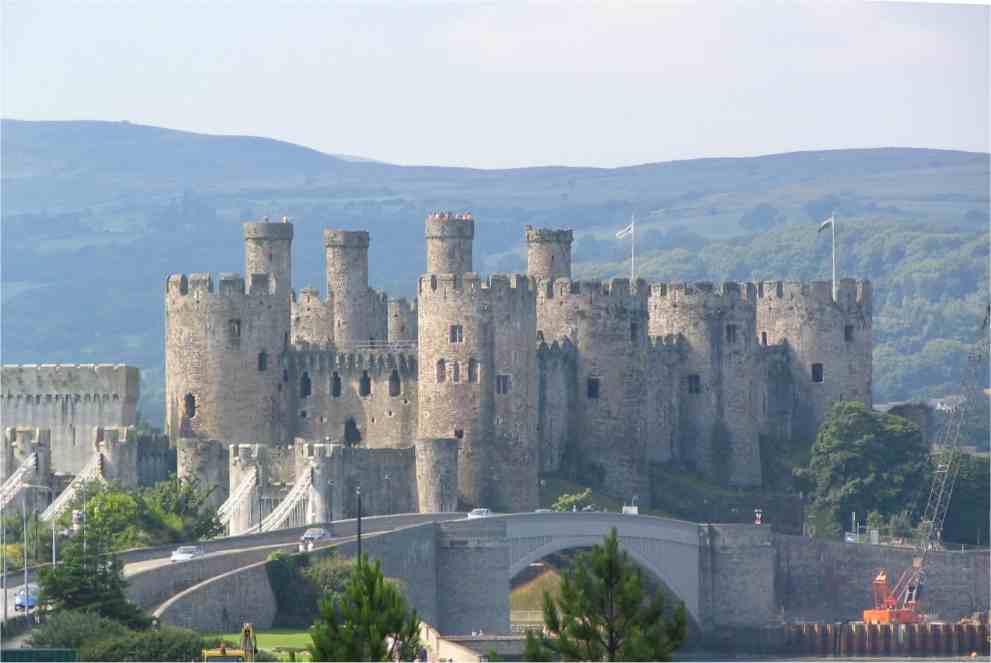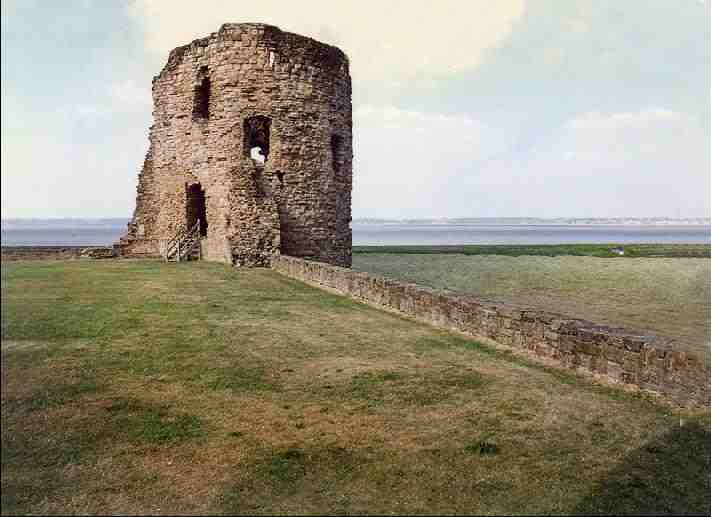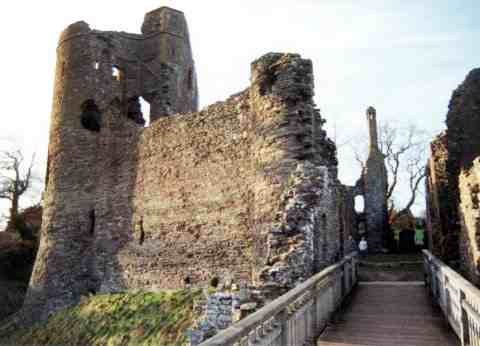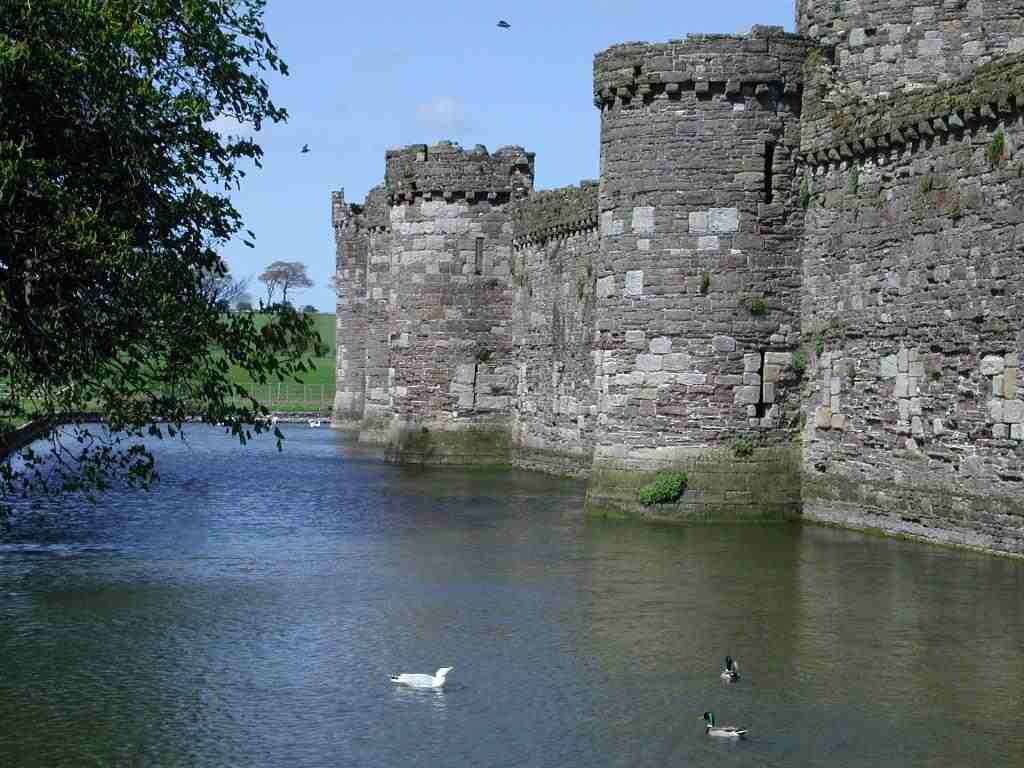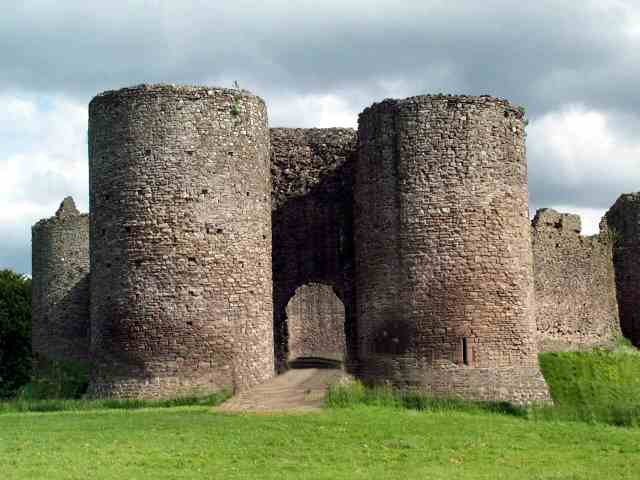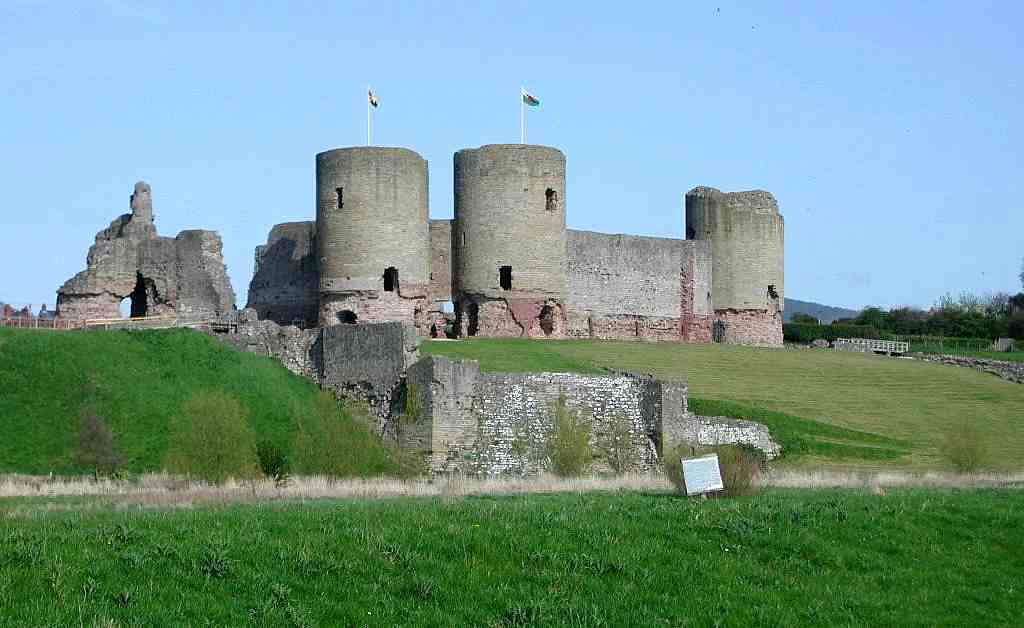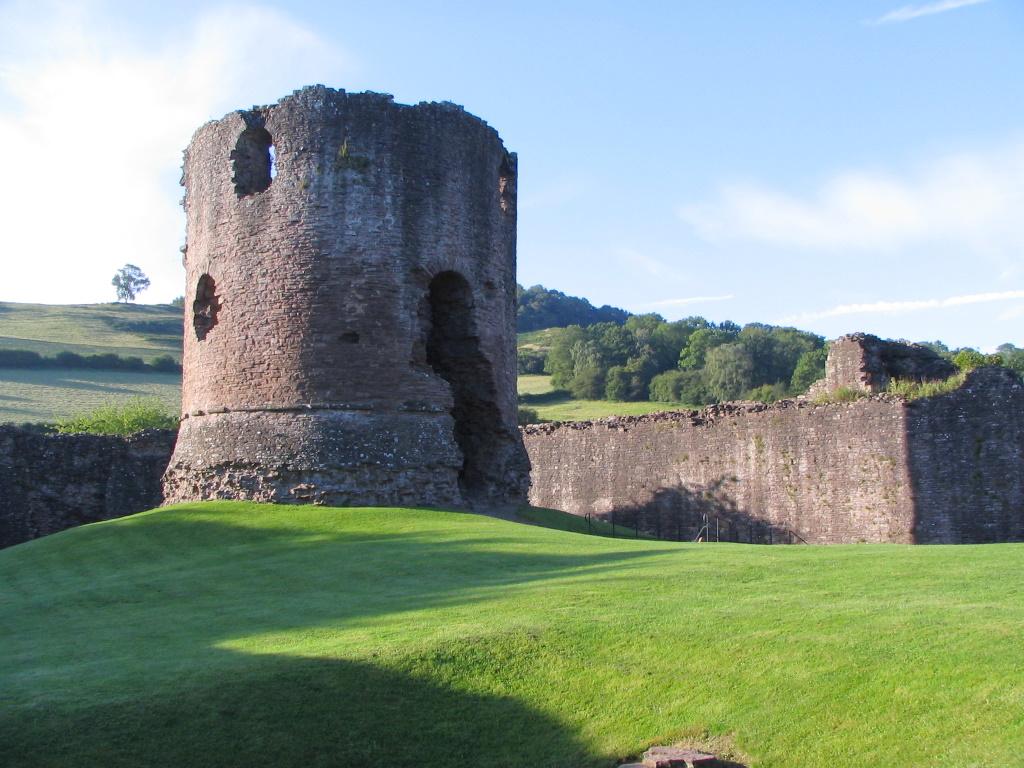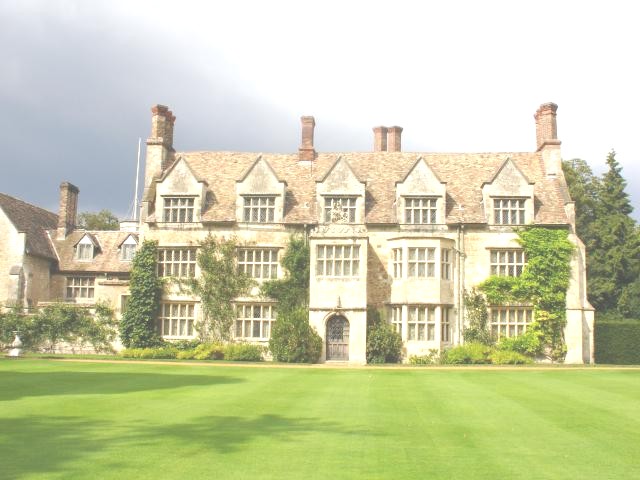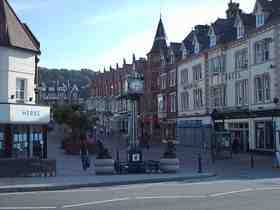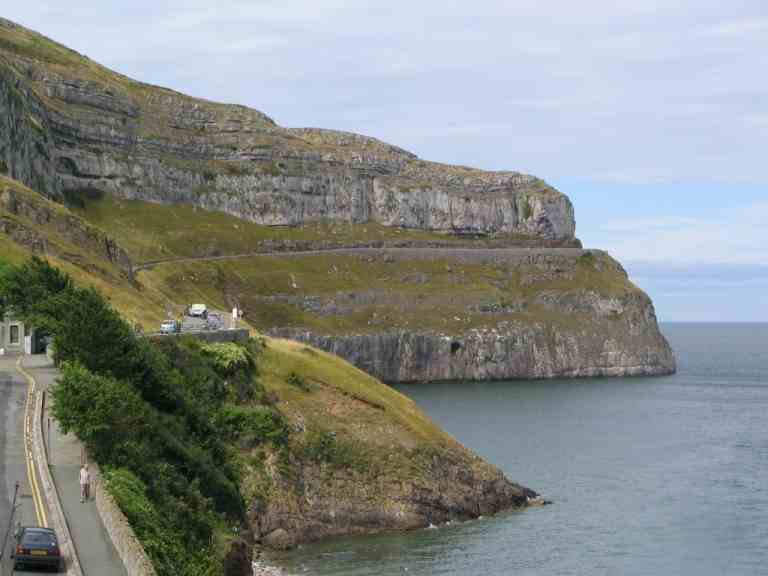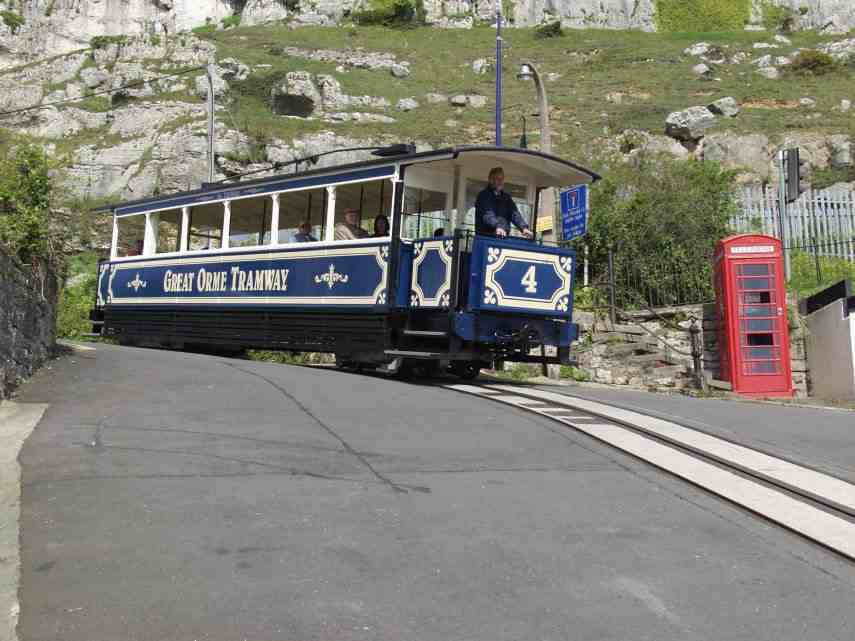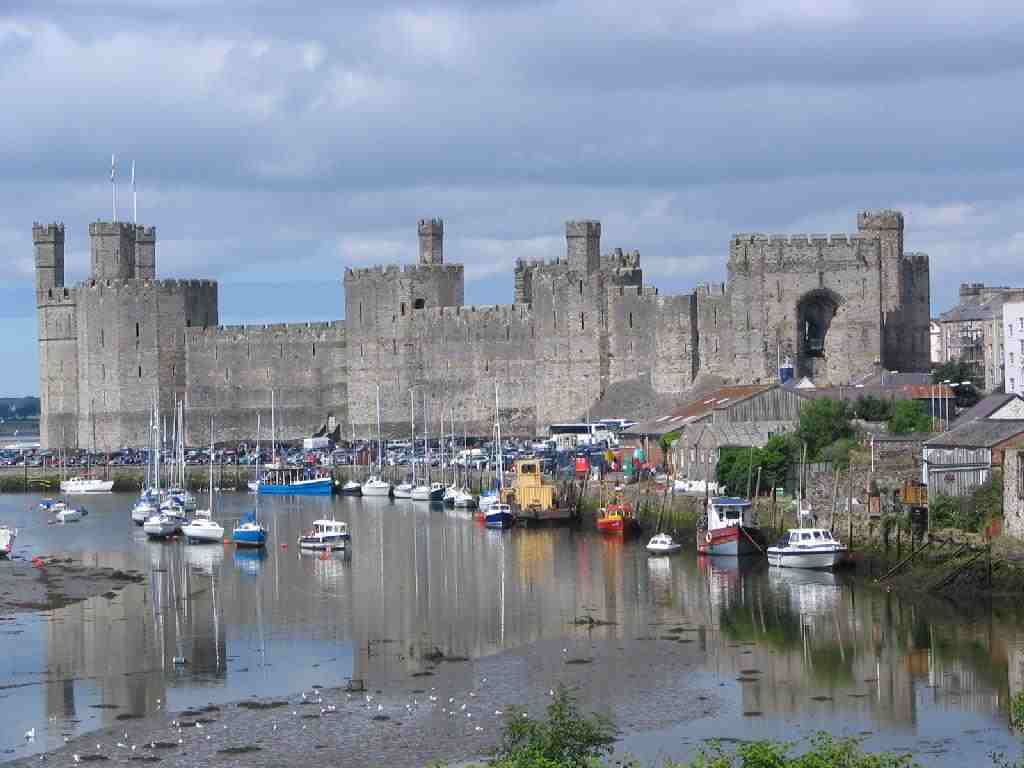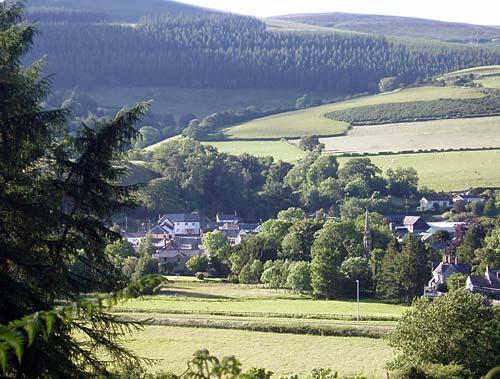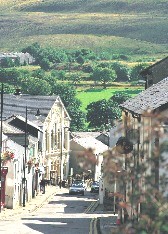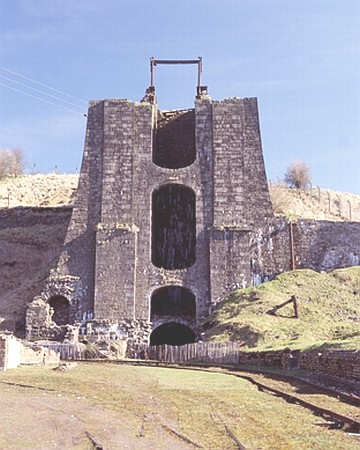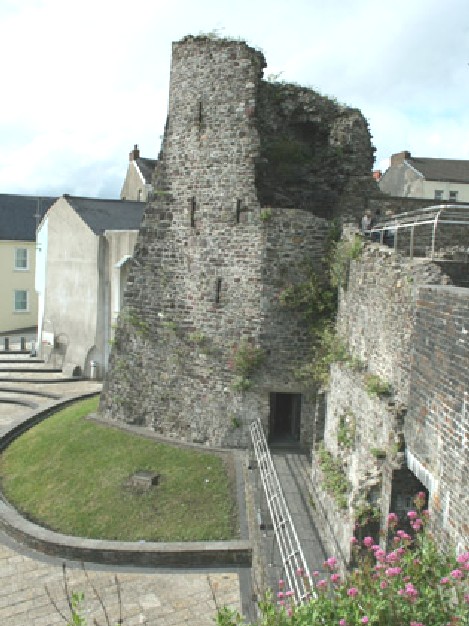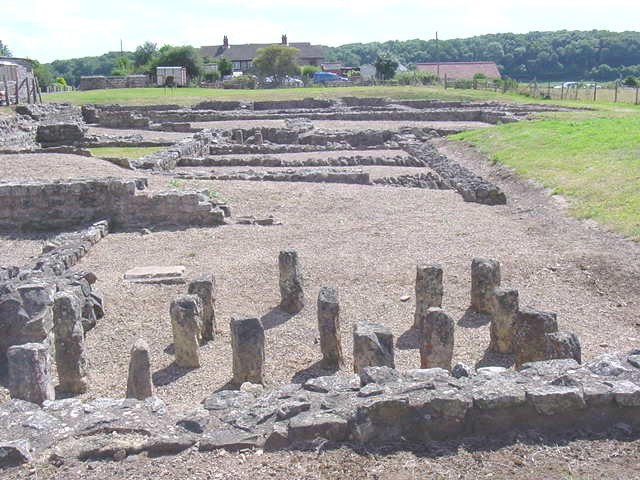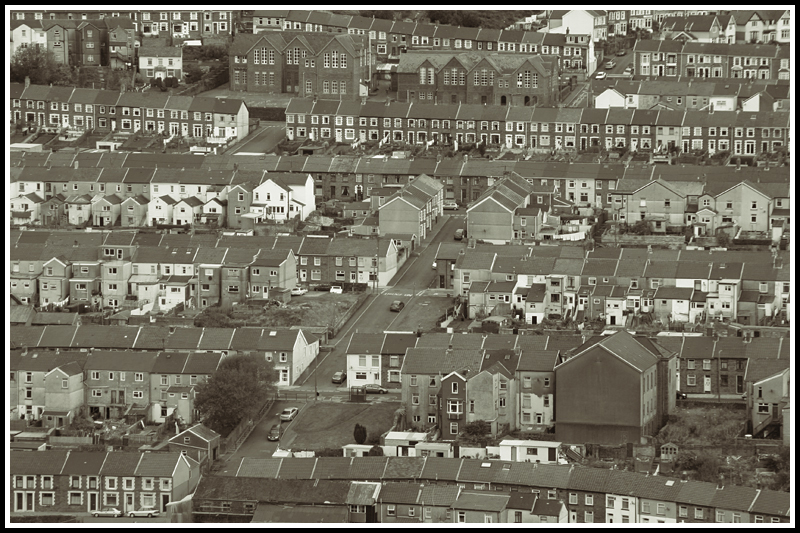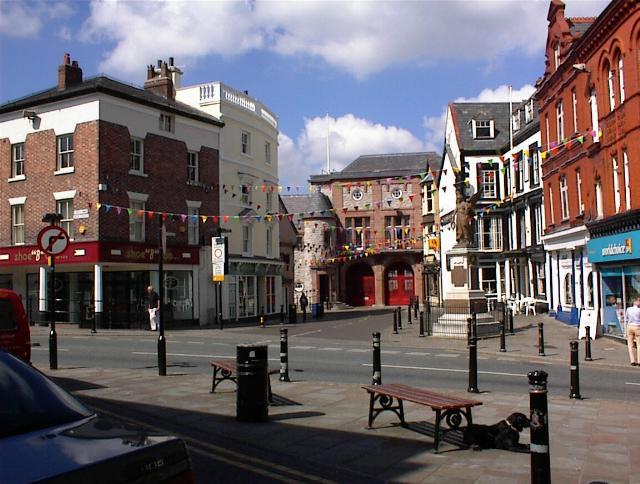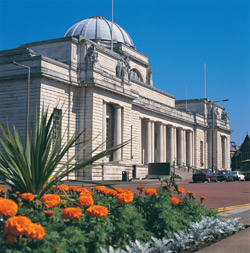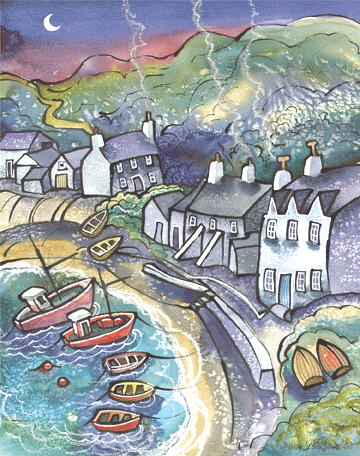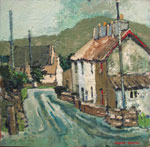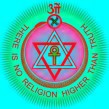
The Writings of Annie Besant
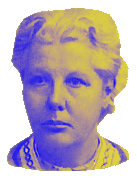
Annie
Besant
(1847
-1933)
Mysticism
by
Annie Besant
First published in 1925
In the early centuries
of Christianity, as we know from the writings of many of the Fathers, and more
surely by the Occult Records,there existed in the bosom of the Christian Church
the venerable institution of the Mysteries, in which the purified met superhuman
Instructors, and learned from the lips of the Holy Ones the secrets of the
'Kingdom of Heaven'. After the Christ had thrown off His physical body, He
taught His disciples for many years, coming to them in His glorified subtle
body, until those who knew Him in the flesh had passed away.
So long as the Christian
Mysteries endured, Jesus appeared at them from time to time, and His chief
disciples were constantly present at them. So long as this state of things
continued,the exoteric and the esoteric teachings of Christianity ran side by
side in perfect accord,and the mysteries supplied to the high places in the
Church men who were true teachers for the mass of believers, being themselves
deeply instructed in the "hidden things of God", and able to speak
with the authority which comes from direct knowledge They, like their Master,
"taught as having authority and not as the scribes".
But after the
disappearance of the Mysteries, the state of affairs slowly altered for the
worse, and a divergence between the exoteric and esoteric teachings showed
itself ever increasingly until a wide gulf yawned between them, and the mass of
the faithful, standing on the exoteric side, lost sight of the
esoteric wisdom. More
and more did the letter take the place of the spirit, the form of the life, and
there began the strife between the Priest and the Mystic that has ever since
been waged in the Christian Church.
The Priest is ever the
guardian of the exoteric, the recipient of the faith once delivered to the
saints, the officiant of the sacraments, the custodian of the outer order,the
transmitter of the traditions, becoming more authoritative from age to age. His
to repeat accurately the sacred formulæ ; his to watch over a
changeless orthodoxy;
his to be the articulate voice of the Church; his to hand on the unaltered
record. Great and noble is his task, and invaluable his services to the
evolving masses of the populace. It is he who consecrates their birth,
sanctions their marriage,hallows their death; he consoles them in their sorrows
and purifies their joys; he stands by the bedside of the sick and the dying,
and gilds the clouds of mortality with the sun of an immortal hope. He brings
into sordid lives the one gleam of poetry and of colour that they known; he enlarges
their narrow horizon with the vistas of a radiant future; he gladdens the
mother with the vision of the Immortal Babe; he saves the desperate youth with
the tenderness of the celestial Mother; he raises before the eyes of the
sorrowful the crucifix that tells of a sorrow that embraces and consoles their
grief; he breathes into the ear of the dying the pledge of the Easter
resurrection,
How could Humanity tread
the earlier stages of its journey without the Priesthood that directs, rebukes,
and comforts; the universality of the office tells of the universality of the
need.
Far other is the Mystic,
the lonely dweller on the mountain-side, climbing in advance of his race,
without help from the outer world, listening ever for the faint whisper of the
God within. Humblest of men as he faces the depths of Divinity around im and
the unsounded abysses of the Divinity within, he seems arrogant as he
withstands the edits of external authority, and rebel as he bows not his neck
to the yoke of ecclesiastical order. With his visions and his dreams and his
ecstasies,with his gropings in the dark and his flashes from a light supernal
that dazzles more than it illuminates, with his sudden irrational exaltations
and his equally sudden and unreasoning depressions, what has he to oppose to
the clear-cut doctrines and the imperial authority of the exoteric creed? Only
an unalterable conviction which he can neither justify nor explain; a certainty
which leaves him stuttering when he seeks to expound it, but remains unfaltering
in face of all rebuke and al reprobation. What can the Priest do with this
rebel, who places his visions above all scriptures, and asserts an inalienable
liberty in the face of the demand for obedience? He has no use for him, no
place for him; he disturbs with his curb less fantasies the settled order of
thehousehold of faith. Hence a continued struggle, in which the Priest for a
awhile seems to conquer, but form which the Mystic emerges victor in the end.
The combat seems an unequal
one, since the Priest has behind him the strength of a splendid tradition, of a
centuried history, of a changeless authority, and the Mystic stands alone,
unfriended. But it is not so unequal as it seems; for the Mystic draws his
strength from That which gives birth to all religions, and he
bathes in the waters
that regenerate, in the flood of Eternity. So in the ever-recurring conflict,
the Priest conquers in the world material, and is defeated in the world
spiritual; and the Mystic, rebuked, persecuted, crushed, while dwelling in the
body;, becomes the Saint after the body has dropped from him, and becomes a
voice of the Church that silenced him, a stone in the walls that imprisoned.
In the Roman Catholic
Church this combat has been waged century after century, with the same result
continually repeated. Teresa, rebuked and humbled by her confessor, arises as
S. Teresa for unborn generations. Many a man and many a women, regarded
askance, treated with scorn by their contemporaries, become the cynosures of
countless millions of eyes, eyes of the faithful, descendants of the faithful
who decried. And on the whole it is as well that it should be so, until the
stern training of old is re-established; else would every dreamer be taken as a
Mystic, and every hysteric as a Revealer. Only the true Mystic can walk
unblenching through the fire of rebuke, "even in hell can whisper, 'I have
known'". Moreover,r the Roman Catholic Church alone has preserved a
systematic training within the 'religious life', a real preparation for the
occult life, ever recognised in theory even if challenged and suspected in
practice.
Hence has she so many
Saints, and such grace and tenderness of spiritual beauty, that one is fain to
pardon her the cruelties of her Priesthood for the sake of the rich streams of
spiritual life poured by her Mystics over the arid deserts of the outer world.
And one can understand, while reprobating, the fierceness with
which she guarded the
ground that made such growths of saintliness possible, and made her deem the
superstition and bigotry of the masses but a small price to pay for the keeping
sacred from profane touch the inner seeds which flowered out into the world as
the Saints
In Protestantism there
has been no systematic training, and hence no soil in which the rare flower
might readily root itself and grow. Few and far between are the Mystics in the
Protestant community, though Jacob Boehme rises, splendid, gigantic, as though
to show that even the absence of all training cannot stifle the Divinity of the
Spirit which is Man.More than any other phase of christianity does
Protestantism need the presence of Mystics in its midst, the touch of the
living Spirit to save it from the arid letter. But this is is a subject that
needs separate treatment, which elsewhere I hope to give.
Theosophy is the reassertion of Mysticism within the bosom of very
living religion, the affirmation of the reality of the mystic state of
consciousness and of the value of its products. In the midst of a scholarly and
critical generation, it reproclaims the superiority of the knowledge which is
drawn from the direct experience of the spiritual world, and, facing undaunted
the splendour of the accumulated results of research, historical and
scientific, facing undaunted the new and menacing Priesthood of Science and of
Criticism, it affirms he greater splendour of the open vision, and the royalty
of the Kingdom into which may pass 'the little child' alone.
The primary experience
of Mysticism is direct communion with the unseen, the recognition of the Gods
without by the God within, the touching of invisible realities, the passing
with opened eyes into the worlds beyond the veil. It substitutes experience for
authority, knowledge for faith, and it finds its guarantee in the
'common-sense' of all Mystics, the identity of the experiences of all who
traverse the grounds untrodden by the profane.
The results of mystic
experiences show themselves in a method of interpretation applied to all
doctrines and to all scriptures, a method which justifies itself by the light
it throws on obscurities rather than by reasoned arguments. It is, in all ages,
the method of the Illuminati.
An example will show the
method better than efforts at explanation. Let us take the doctrine of the
Atonement. The Mystic sees in this Christian doctrine one of the ways in which
is told the ancient but ever new story of the unfolding of the
human Spirit into
self-conscious union with God. He sees the Atonement wrought by the unfolding
of the Christ in man as the reflection in the human consciousness of the second
Aspect in the Divine Consciousness, gradually shining out into clearness and
beauty. As the Christ in man matures so is the atonement wrought, and it is
completed when the Son, rising above separation, knows himself as one with
Humanity and one with God, and in that knowledge becomes a veritable Saviour, a
true Mediator between God and Man, uniting both in His own person, and thus
making them one. The Mystic cares not to argue about the dead-letter meaning of
any dogma; he sees the heart of it by the light of his own experience, and to
him its true value lies in its inner content, not in its outer history.
So also with Scripture.
It may, or may not, have an outer accuracy as history; its value lies in its
exposition of the facts of the spiritual world. Whether a physical Israel did
or did not wander through a physical desert seems to him to be of infinitesimal
importance; many nations have wandered through many deserts.
But the spiritual Israel
wanders ever through spiritual deserts in its search for the promised land, and
this is ever fresh, ever true, and he reads the story in the spiritual light
and finds in it much that consoles, much that illuminates. He sees a Moses in
every Prophet of humanity, pillars of fire and of cloud in every guidance of a
nation. Nor is the Mystic without justification
in thus reading the
Scriptures; for S.Paul in Galatians iv., has thus dealt with the story of Abraham,
Sarah, Hagar, Isaac and Ishmael; and all the early Fathers of the Church sought
the inner meanings and care little for the outer words.
For the educated
Christian of today, who would not cut himself wholly off from the old moorings,
this method of interpretation is vital, and only by the direct knowledge gained
in the mystic state of consciousness can he preserve his religion amid the
changes brought about by modern research.
The Higher Criticism is
undermining all his authorities; subtly, but in deadly fashion, its burrowing's
have taken the ground away beneath their feet; and only a thin crust remains,
which at any moment may give way, and let the whole structure crash down into
irretrievable ruin. The Church can no longer be built on historical authority;
it must build itself on the rock of experience, if it would survive the tempest
which roars around it. Mysticism can give it the surest certainty in all the
world, the certainty of mystic experience continually renewed.
The Christ within is the
only guarantee of the Christ without - but no further guarantee is needed.
Because the Christ lives undeveloped in every human Spirit, the Christ
developed is a historical fact; and those in whom the mystic Christ is
developing can look across the gulf of centuries and recognise the historical
Christ; nay, can transcend the limitations of the physical, and know Him in His
living reality as surely, and more fully, than His disciples knew Him when He
walked by the lake of Gennesaret.
For more info on Theosophy
Try these

Cardiff Theosophical Society meetings
are informal
and there’s always a cup of tea afterwards
The Cardiff Theosophical
Society Website
The National Wales Theosophy
Wesbsite
Dave’s Streetwise Theosophy
Boards
If
you run a Theosophy Group then please
Feel
free to use any material on this Website
Theosophy
Cardiff’s Instant Guide to Theosophy
One
Liners & Quick Explanations
The main criteria for the
inclusion of
links on this site is that
they are have some
relationship (however tenuous)
to Theosophy
and are lightweight, amusing
or entertaining.
Topics include Quantum Theory
and Socks,
Dick Dastardly and Legendary Blues Singers.
No
Aardvarks were harmed in the
History
of the Theosophical Society
General pages about Wales,
Welsh History
and The History of Theosophy
in Wales
Her Teachers Morya & Koot
Hoomi
The
Most Basic Theosophy Website in the Universe
If you run a Theosophy Group
you can use
this as an introductory
handout
Lentil burgers, a thousand
press ups before breakfast and
the daily 25 mile run may put
it off for a while but death
seems to get most of us in the
end. We are pleased to
present for your
consideration, a definitive work on the
subject by a Student of
Katherine Tingley entitled
Theosophy and the Number Seven
A selection of articles
relating to the esoteric
significance of the Number 7
in Theosophy
The Spiritual Home of Urban Theosophy
The Earth Base for Evolutionary Theosophy
Classic Introductory Theosophy Text
A Text Book of Theosophy By C
What Theosophy Is From the Absolute to Man
The Formation of a Solar System The Evolution of Life
The Constitution of Man After Death Reincarnation
The Purpose of Life The Planetary Chains
The Result of Theosophical Study
An Outstanding
Introduction to Theosophy
By a student of
Katherine Tingley
Elementary Theosophy Who is the Man? Body and Soul
Body, Soul and Spirit Reincarnation Karma
Helena Petrovna Blavatsky 1831 – 1891
The Founder of Modern Theosophy
Index of Articles by
By
H P Blavatsky
Is the Desire to Live Selfish?
Ancient Magic in Modern Science
Precepts Compiled by H P Blavatsky
Obras Por H P Blavatsky
En Espanol
Articles about the Life of H P Blavatsky
Try these if you are
looking for a
local Theosophy Group or Centre
UK Listing of
Theosophical Groups
Worldwide
Directory of Theosophical Links

General pages about Wales,
Welsh History
and The History of Theosophy
in Wales
Wales is a
Principality within the United Kingdom
and has an
eastern border with England.
The land area is
just over 8,000 square miles.
Snowdon in North
Wales is the highest mountain at 3,650 feet.
The coastline is
almost 750 miles long.
The population of Wales as at the 2001 census is 2,946,200.
Nature is infinite in space and
time -- boundless and eternal, unfathomable and ineffable. The all-pervading
essence of infinite nature can be called space, consciousness, life, substance,
force, energy, divinity -- all of which are fundamentally one.
2) The finite and the infinite
Nature is a unity in
diversity, one in essence, manifold in form. The infinite whole is composed of
an infinite number of finite wholes -- the relatively stable and autonomous
things (natural systems or artefacts) that we observe around us. Every natural
system is not only a conscious, living, substantial entity, but is
consciousness-life-substance, of a particular range of density and form.
Infinite nature is an abstraction, not an entity; it therefore does not act or
change and has no attributes. The finite, concrete systems of which it is
composed, on the other hand, move and change, act and interact, and possess
attributes. They are composite, inhomogeneous, and ultimately transient.
3)
Vibration/worlds within worlds
The one essence manifests not
only in infinitely varied forms, and on infinitely varied scales, but also in
infinitely varying degrees of spirituality and substantiality, comprising an
infinite spectrum of vibration or density. There is therefore an endless series
of interpenetrating, interacting worlds within worlds, systems within systems.
The energy-substances of
higher planes or subplanes (a plane being a particular range of vibration) are
relatively more homogeneous and less differentiated than those of lower planes
or subplanes.
Just as boundless space is
comprised of endless finite units of space, so eternal duration is comprised of
endless finite units of time. Space is the infinite totality of worlds within
worlds, but appears predominantly empty because only a tiny fraction of the
energy-substances composing it are perceptible and tangible to an entity at any
particular moment. Time is a concept we use to quantify the rate at which
events occur; it is a function of
change and motion, and
presupposes a succession of cause and effect. Every entity is extended in space
and changes 'in time'.
All change (of position,
substance, or form) is the result of causes; there is no such thing as absolute
chance. Nothing can happen for no reason at all for nothing exists in
isolation; everything is part of an intricate web of causal interconnections and
interactions. The keynote of nature is harmony: every action is automatically
followed by an equal and opposite reaction, which sooner or later rebounds upon
the originator of the initial act. Thus, all our thoughts and deeds will
eventually bring us 'fortune' or 'misfortune' according to the degree to which
they were harmonious or disharmonious. In the long term, perfect justice
prevails in nature.
Because nature is
fundamentally one, and the same basic habits and structural, geometric, and
evolutionary principles apply throughout, there are correspondences between
microcosm and macrocosm. The principle of analogy -- as above, so below -- is a
vital tool in our efforts to understand reality.
All finite systems and their
attributes are relative. For any entity, energy-substances vibrating within the
same range of frequencies as its outer body are 'physical' matter, and finer
grades of substance are what we call energy, force, thought, desire, mind,
spirit, consciousness, but these are just as material to entities on the
corresponding planes as our physical world is to us. Distance and time units
are also relative: an atom is a solar system on its own scale, reembodying perhaps
millions of times in what for us is one second, and our whole galaxy may be a
molecule in some supercosmic entity, for which a million of our years is just a
second. The range of scale is infinite: matter-consciousness is both infinitely
divisible and infinitely aggregative.
All natural systems consist
of smaller systems and form part of larger systems. Hierarchies extend both
'horizontally' (on the same plane) and 'vertically' or inwardly (to higher and
lower planes). On the horizontal level, subatomic particles form atoms, which
combine into molecules, which arrange themselves into cells, which form tissues
and organs, which form part of organisms, which form part of ecosystems, which
form part of planets, solar systems, galaxies, etc. The constitution of worlds
and of the organisms that inhabit them form 'vertical' hierarchies, and can be
divided into several interpenetrating layers or elements, from physical-astral
to psychomental to spiritual-divine, each of which can be further divided.
The human constitution can be
divided up in several different ways: e.g. into a trinity of body, soul, and
spirit; or into 7 'principles' -- a lower quaternary consisting of physical
body, astral model-body, life-energy, and lower thoughts and desires, and an
upper triad consisting of higher mind (reincarnating ego), spiritual intuition,
and inner god. A planet or star can be regarded as a 'chain' of 12 globes, existing
on 7 planes, each globe comprising several subplanes.
The highest part of every
multilevelled organism or hierarchy is its spiritual summit or 'absolute',
meaning a collective entity or 'deity' which is relatively perfected in
relation to the hierarchy in question. But the most 'spiritual' pole of one
hierarchy is the most 'material' pole of the next, superior hierarchy, just as
the lowest pole of one hierarchy is the highest pole of the one below.
Each level of a hierarchical
system exercises a formative and organizing influence on the lower levels
(through the patterns and prototypes stored up from past cycles of activity),
while the lower levels in turn react upon the higher. A system is therefore
formed and organized mainly from within outwards, from the inner levels of its
constitution, which are relatively more enduring and developed than the outer
levels. This inner guidance is sometimes active and selfconscious, as in our
acts of free will (constrained, however, by karmic tendencies from the past),
and sometimes it is automatic and passive, giving rise to our own automatic
bodily functions and habitual and instinctual behavior, and to the orderly,
lawlike operations of nature in general. The 'laws' of nature are therefore the
habits of the various grades of conscious entities that compose reality,
ranging from higher intelligences (collectively
forming the universal mind) to elemental nature-forces.
10) Consciousness and its vehicles
The core of every entity --
whether atom, human, planet, or star -- is a monad, a unit of consciousness-life-substance,
which acts through a series of more material vehicles or bodies. The monad or
self in which the consciousness of a particular organism is focused is animated
by higher monads and expresses itself through a series of lesser monads, each
of which is the nucleus of one of the lower vehicles of the entity in question.
The following monads can be distinguished: the divine or galactic monad, the
spiritual or solar monad, the higher human or planetary-chain monad, the lower
human or globe monad, and the animal, vital-astral, and physical monads. At our
present stage of evolution, we are essentially the lower human monad, and our
task is to raise our consciousness from the animal-human to the spiritual-human
level of it.
Evolution means the
unfolding, the bringing into active manifestation, of latent powers and
faculties 'involved' in a previous cycle of evolution. It is the building of
ever fitter vehicles for the expression of the mental and spiritual powers of
the monad. The more sophisticated the lower vehicles of an entity, the greater
their ability to express the powers locked up in the higher levels of its
constitution. Thus all things are alive and conscious, but the degree of
manifest life and consciousness is extremely varied.
Evolution results from the
interplay of inner impulses and environmental stimuli. Ever building on and
modifying the patterns of the past, nature is infinitely creative.
12) Cyclic evolution/re-embodiment
Cyclic evolution is a
fundamental habit of nature. A period of evolutionary activity is followed by a
period of rest. All natural systems evolve through re-embodiment. Entities are
born from a seed or nucleus remaining from the previous evolutionary cycle of
the monad, develop to maturity, grow old, and pass away, only to re-embody in a
new form after a period of rest. Each new embodiment is the product of past
karma and present choices.
Nothing comes from nothing:
matter and energy can be neither created nor destroyed, but only transformed.
Everything evolves from preexisting material. The growth of the body of an
organism is initiated on inner planes, and involves the transformation of higher
energy-substances into lower, more material ones, together with the attraction
of matter from the environment.
When an organism has
exhausted the store of vital energy with which it is born, the coordinating
force of the indwelling monad is withdrawn, and the organism 'dies', i.e. falls
apart as a unit, and its constituent components go their separate ways. The
lower vehicles decompose on their respective subplanes, while, in the case of
humans, the reincarnating ego enters a dreamlike state of rest and assimilates
the experiences of the previous incarnation. When the time comes for the next
embodiment, the reincarnating ego clothes itself in many of the same atoms of
different grades that it had used previously, bearing the appropriate karmic
impress. The same basic processes of birth, death,
and rebirth apply to all entities, from atoms to humans to stars.
14)
Evolution and involution of worlds
Worlds or spheres, such as
planets and stars, are composed of, and provide the field for the evolution of,
10 kingdoms -- 3 elemental kingdoms, mineral, plant, animal, and human
kingdoms, and 3 spiritual kingdoms. The impulse for a new manifestation of a
world issues from its spiritual summit or hierarch, from which emanate a series
of steadily denser globes or planes; the One expands into the many. During the
first half of the evolutionary cycle (the arc of descent) the energy-substances
of each plane materialize or condense, while during the second half (the arc of
ascent) the trend is towards dematerialization or etherealization, as globes
and entities are reabsorbed into the spiritual hierarch for a period of nirvanic
rest. The descending arc is characterized by the evolution of matter and
involution of spirit, while the ascending arc is characterized by the evolution
of spirit and involution of matter.
In each grand cycle of
evolution, comprising many planetary embodiments, a monad begins as an
unselfconsciousness god-spark, embodies in every kingdom of nature for the
purpose of gaining experience and unfolding its inherent faculties, and ends
the cycle as a self conscious god. Elementals ('baby monads') have no free
choice, but automatically act in harmony with one another and the rest of
nature. In each successive kingdom differentiation and individuality increase,
and reach their peak in the human kingdom with the attainment of
selfconsciousness and a large measure of free will.
In the human kingdom in
particular, self-directed evolution comes into its own. There is no superior
power granting privileges or handing out favours; we evolve according to our
karmic merits and demerits. As we progress through the spiritual kingdoms we
become increasingly at one again with nature, and willingly 'sacrifice' our
circumscribed selfconscious freedoms (especially the freedom to 'do our own
thing') in order to work in peace and harmony with the greater whole of which
we form an integral part. The highest gods of one hierarchy or world-system
begin as elementals in the next. The matter of any plane is composed of
aggregated, crystallized monads in their nirvanic sleep, and the spiritual and
divine entities embodied as planets and stars are the electrons and atomic
nuclei -- the material building blocks -- of worlds on even larger scales.
Evolution is without beginning and without end, an endless adventure through
the fields of infinitude, in which there are always new worlds of experience in
which to become selfconscious masters of life.
There is no absolute
separateness in nature. All things are made of the same essence, have the same
spiritual-divine potential, and are interlinked by magnetic ties of sympathy.
It is impossible to realize our full potential, unless we recognize the
spiritual unity of all living beings and make universal brotherhood the keynote
of our lives.
Hey Look! Theosophy in
Cardiff
Cardiff Theosophical Society
in Wales
Cardiff, Wales, UK. CF24 – 1DL
_________________
Wales Picture Gallery
The
Great Orme
Llandudno
Promenade
Great
Orme Tramway
New
Radnor
Blaenavon
Ironworks
Llandrindod
Wells
Cardiff Theosophical Society
in Wales
Cardiff, Wales, UK. CF24 – 1DL
Presteign
Railway
Caerwent Roman Ruins
Denbigh
Nefyn
Penisarwaen
Cardiff Theosophical Society
in Wales
Cardiff, Wales, UK. CF24 – 1DL

